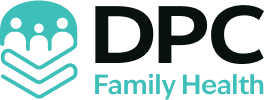TL;DR:
- What is DPC? A healthcare model where patients pay a retainer fee (typically $50-$150/month) instead of using insurance.
- Key Benefits:
- Transparent pricing: No hidden fees.
- Extended appointments: 30-60 minutes per visit.
- Direct communication: Contact via phone, email, or text.
- Lower overall costs: No co-pays or deductibles.
- Fewer patients: Around 600 per doctor.
- Accessibility: Same-day/next-day appointments reduce wait times.
- Patient Satisfaction: Improved health management and stronger doctor-patient relationships lead to better outcomes.
- Comparison: DPC simplifies billing, reduces admin work, and provides more personalized care than traditional healthcare.
Is your healthcare leaving you frustrated with long wait times, rushed appointments, and confusing bills? Direct Primary Care (DPC) might be the game-changer you need. Imagine having a personal doctor on speed dial, unlimited visits, and a transparent monthly fee—no insurance drama involved. Stick around as we dive into the top benefits of Direct Primary Care and show you how this model is rewriting the rules of primary care. Ready to transform your health experience? Let’s get into it!
Understanding the Concept of Direct Primary Care
Direct Primary Care (DPC) is a healthcare model that eliminates traditional insurance billing. Instead, patients pay a regular retainer fee—monthly, quarterly, or annually—that covers most primary care services. This setup simplifies pricing and removes the headache of insurance claims. The result? Predictable healthcare costs for patients and improved care.
By cutting out the insurance middlemen, DPC reduces administrative burdens. Doctors can spend less time on paperwork and more time with patients, which means longer, more personalized appointments. Physicians typically have fewer patients, enabling them to provide higher-quality care.
5 Main Benefits of the DPC Model:
- Transparent pricing: Know exactly what you’re paying for.
- Extended appointments: More time with your doctor for in-depth care.
- Direct communication: Reach out via phone, email, or text.
- Lower overall costs: No hidden fees or surprise bills.
- Fewer patients per doctor: More focused and personalized care.
Financial Advantages of Direct Primary Care

DPC offers significant cost savings by removing insurance middlemen. Patients pay a monthly fee covering most primary care services, typically between $50 and $150. Without insurance, there are no co-pays, deductibles, or out-of-pocket surprises. This translates to lower overall healthcare expenses and more predictable budgeting.
Transparent pricing is another big win. With DPC, you know exactly what you’re paying for each month. This fee structure eliminates the administrative costs associated with insurance claims and paperwork, allowing doctors to focus more on patient care rather than dealing with insurance companies. Fewer administrative tasks mean reduced overhead, further driving down costs for patients.
| Expense Type | Traditional Healthcare | DPC |
|---|---|---|
| Monthly Premium | $400+ | $50-$150 |
| Co-pays | $20-$50 per visit | $0 |
| Deductibles | $1,000+ | $0 |
DPC makes healthcare more affordable for patients. Eliminating hidden fees and providing clear, upfront costs allows for better financial planning. Patients can focus on their health without the stress of unpredictable medical bills.
Enhanced Accessibility and Convenience
Shorter wait times and same-day appointments? Yes, please! One of the standout benefits of DPC is quick access to healthcare services. Patients often get same-day or next-day visits, drastically reducing the time spent waiting for care. This means you can get medical attention immediately, without long delays.
DPC also excels in communication. You can reach your doctor via phone, email, or even text. Imagine having a health question and getting a quick response from your doctor instead of navigating through layers of administrative staff. These multiple communication channels ensure you have continuous care and support. Whether it’s a quick question or a more in-depth discussion about your health, DPC keeps you connected.
5 Ways DPC Improves Convenience for Patients:
- Same-day or next-day appointments: Get seen faster.
- Direct communication: Chat with your doctor via phone, email, or text.
- Longer appointments: Spend more quality time with your physician.
- Flexible scheduling: More appointment slots to fit your busy life.
- Fewer patients per doctor: More personalized and attentive care.
Strengthening the Doctor-Patient Relationship

One of the standout benefits of DPC is increased interaction between doctors and patients. In DPC, appointments often last 30 to 60 minutes. This gives doctors ample time to understand your health issues comprehensively. Longer appointments mean your doctor isn’t rushed, so they can dig deeper into your health concerns, answer all your questions, and tailor their advice specifically to you.
DPC doctors typically have a smaller patient load, around 600, compared to 2,500 in traditional practices. Fewer patients mean more focused care. Your doctor can spend more time on your case, keep track of your medical history in detail, and follow up more effectively. This setup fosters continuity in care, which is crucial for managing chronic conditions and maintaining overall wellness.
5 Benefits of a Strong Doctor-Patient Relationship:
- Better communication: Clearer and more open dialogue.
- Personalized care: Healthcare tailored to your specific needs.
- Continuity of care: Consistent follow-ups and better long-term management.
- Increased trust: Feeling more comfortable sharing health concerns.
- Higher satisfaction: Overall, better patient experience.
A solid doctor-patient relationship built on trust and satisfaction makes a world of difference in healthcare. When you trust your doctor, you’re more likely to follow medical advice and feel supported in your health journey. This leads to better health outcomes and a more satisfying healthcare experience overall.
Real-World Examples and Patient Testimonials
DPC is making waves in both urban and rural settings. Take Dr. Smith’s practice in New York City, for instance. Patients love the quick access to care, often getting same-day or next-day appointments. Meanwhile, in a small town in rural Kansas, Dr. Johnson’s DPC clinic has transformed healthcare by offering transparent pricing and eliminating the need for insurance. These real-world examples show that DPC can be successfully implemented regardless of location, making high-quality healthcare accessible to more people.
Patient testimonials often highlight the same themes: better health management, stronger relationships with doctors, and satisfaction with cost transparency. Many patients report improved health because they can easily communicate with their doctor and get timely advice. They also appreciate the personal touch and comprehensive care with longer appointment times. DPC’s direct and transparent nature helps patients feel more in control of their healthcare, leading to higher satisfaction rates.
4 Patient Testimonials Highlighting Different Aspects of DPC Benefits:
- “I love that I can text my doctor anytime. It makes managing my chronic condition so much easier.”
- “Switching to DPC was the best decision ever. No more surprise bills, and I get to talk to my doctor for more than five minutes.”
- “The transparent pricing is a game-changer. I know exactly what I pay monthly, and it’s way less than my old insurance premiums.”
- “Having the same doctor for all my visits has improved my health. I feel like my doctor truly understands me now.”
Comparing Direct Primary Care with Traditional Healthcare

DPC and traditional healthcare models differ significantly in structure. In DPC, physicians charge a retainer fee instead of billing insurance for each service. This approach eliminates the need for insurance claims, allowing doctors to spend more time with patients and less on paperwork. Traditional healthcare, on the other hand, heavily relies on insurance companies, leading to a lot of administrative work and often less time for patient care. This fundamental difference means DPC can offer more direct and personal interactions.
The benefits of DPC are clear for patients. One major advantage is cost savings. Without insurance companies, patients avoid co-pays, deductibles, and unexpected bills. The retainer fee covers most primary care services, making healthcare costs more predictable and often lower overall. Additionally, DPC allows for shorter wait times and longer appointments, ensuring that patients receive thorough and personalized care. Because doctors in DPC practices typically have fewer patients, they can provide more focused attention and better follow-up care.
| Aspect | Traditional Healthcare | Direct Primary Care |
|---|---|---|
| Billing | Insurance-based | Retainer fee |
| Administrative Work | High | Low |
| Patient Load | 2,500 patients per doctor | 600 patients per doctor |
| Appointment Length | 15 minutes | 30-60 minutes |
For physicians, DPC simplifies the billing process and reduces administrative burdens, allowing them to focus more on patient outcomes. Doctors can provide more comprehensive care with fewer patients and longer appointment times. This model benefits patients and enhances job satisfaction for doctors by reducing the stresses associated with traditional insurance-based practices.
Final Words
We’ve covered much about Direct Primary Care, from its unique retainer fee model to its financial perks. This approach skips insurance chaos and brings more personalized, cost-effective care.
One of the biggest wins is easier access and shorter wait times, which means you get care when you need it. This model also fosters genuine doctor-patient relationships, making healthcare feel more caring.
The benefits of direct primary care are pretty straightforward: less stress, more savings, and a stronger connection with your doctor. That’s a win-win in my book.
FAQ
What are the benefits of direct patient care?
Direct Primary Care (DPC) offers numerous benefits, including:
- Personalized care: Doctors spend more time with each patient.
- Cost savings: No hidden fees or co-pays.
- Easier access: Same or next-day appointments.
- Better communication: Direct contact via phone, email, and text.
- Health focus: Proactive wellness and chronic condition management.
Is direct primary care worth it?
DPC can be worth it for those who value personalized care and easy access to their doctors. The fixed monthly fee often leads to overall savings and improved health outcomes.
Does Direct primary care save money?
Yes. DPC can save money by eliminating copays, deductibles, and insurance hassles. Patients pay a predictable fee, typically ranging from $50 to $150 per month, which can reduce overall healthcare costs.
What is a criticism of Direct primary care?
A common criticism of DPC is that it may not cover all specialist services, requiring separate insurance for catastrophic events. Also, it may not be available everywhere yet.
What is the Direct Primary Care model?
The DPC model involves paying a retainer fee (monthly, quarterly, or annually) that covers most primary care services. This setup reduces administrative burdens and allows doctors to focus on personalized patient care.
What are the pros and cons of Direct Primary Care?
Pros:
- Personalized care
- Cost savings
- Better access and communication
- Proactive health management
Cons:
- It may not cover specialist services
- Potential need for additional insurance
- Limited availability in some areas
What is the monthly cost of Direct Primary Care?
The monthly cost of DPC typically ranges from $50 to $150, covering most primary care services. This fee eliminates copays and other unexpected charges.
What is Direct Primary Care insurance?
DPC itself is not insurance. Instead, it operates on a subscription basis for primary care services. Patients may still need insurance for specialist care and emergencies.

